
Flying With Pablo Hernandez
Tuesday, July 17, 2018
- Team CYPRES
- 7/17/18
- 0
- General, Sponsored Athlete
Above Photo by Juan Mayer
Pablo Hernandez is a sunny guy. It’s one of the first things you notice about him when you meet him: the merry, guileless grin that always seems to light up his face.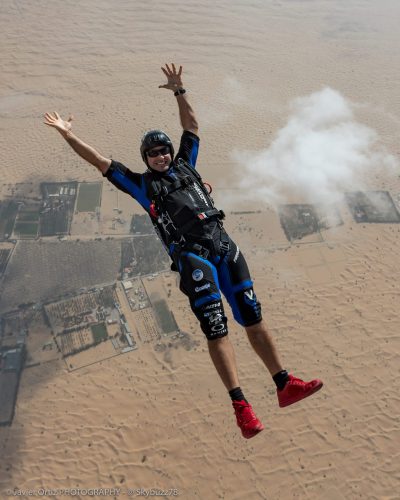
He might have been born with it. After all, Pablo hails from Valencia. It was there, in the endless summer of one of the balmiest parts of Spain’s Mediterranean coast, that he carried on his family’s skydiving legacy to become one of the biggest names in canopy piloting.
“My grandfather was a pilot on the Spanish Republic side of the Civil War,” Pablo begins. “I guess he wasn’t the best pilot. He got shot down twice, so he had to jump from the plane twice and open a round parachute and land twice. That was the start of skydiving in our family — my grandfather’s bailouts.”
Many years later, the erstwhile fighter pilot brought his two sons to a civilian skydiving center. His father and uncle became skydivers. Eventually, Pablo’s dad became an instructor.
“My father is 60 years old,” Pablo grins, “and still jumps every week.”
Pablo’s skydiving-instructor dad was a popular, busy, mobile kinda guy. Since early childhood, Pablo traveled alongside him. “We were always traveling for skydiving. Every weekend,” Pablo remembers.
The situation escaleted quickly
Raised on the dropzone, as Pablo puts it, he was “the classic dropzone kid.” He’s been packing parachutes since age 11, hustling for ice cream money. The situation escalated quickly. At age 14, he did a static line course — instructed by good ol’ dad.
“It was completely illegal,” Pablo laughs.
Pablo’s father rented a Cessna 182, attached the static line to the seat of the aircraft and pushed me out of the plane. He did five or six static lines and a couple of freefall jumps from 5,000 feet. Pablo did just great. His dad decided that the teenager was ready for the bigtime: Twin Otter time.
The pair headed for a big, familiar dropzone in the south of Spain with a fake ID and a logbook that clocked a hundred-plus jumps. Since Pablo’s dad was so well-known and well-liked, nobody hit the red button.
“We didn’t do a freefall course,” Pablo says. “My father was not even an AFF instructor. He was just a static line instructor. But we went up to 13,000 feet and he took me for freefall for the first time. Not even two instructors; just him and I. That was it.”
We did that for a few jumps, and suddenly, I was a skydiver!
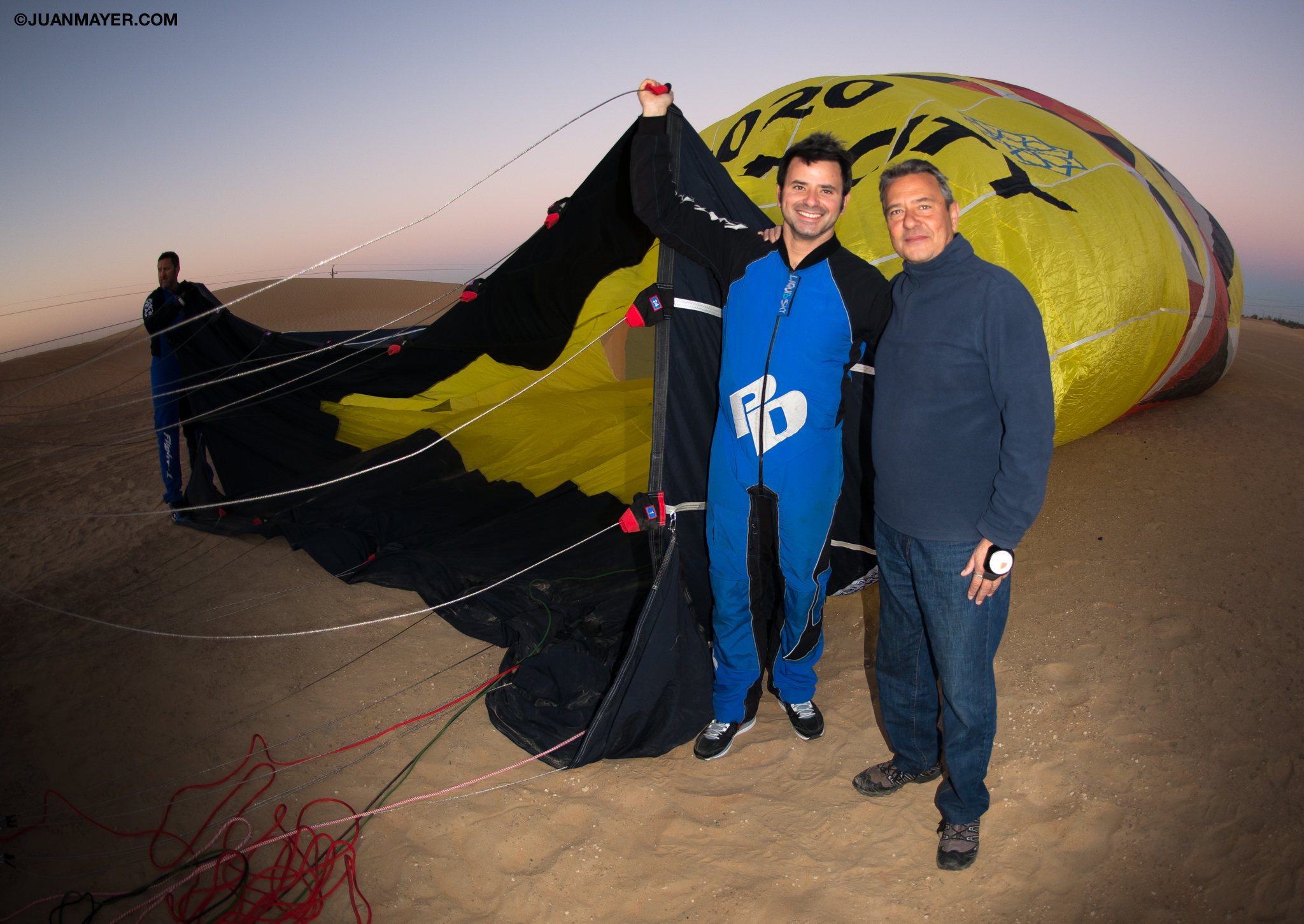
“The dropzone owner had been a really good friend of the family for many years,” Pablo continues, “And he knew. Every year we went there, my age stayed the same. I went there at 14, and he asked, ‘Are you really 16?’ I said yes. No problem. Next year, I was 15, and he was asking, ‘Are you still 16?’ Yes. Okay, no problem. Then, finally, when I was 16 years old, he said, ‘You finally are 16 now, right?’ I think a lot of the drop zone owners knew, but they were supportive of it because they had known my father for a long time and they knew I had the ultimate mentor. I was in good hands.”
Skydiving is all he ever wanted – and it’s exactly what he’s done
Pablo thrived on that accelerated schedule. He became a videographer at 15. By age 18, he was an AFF and tandem instructor.
“That’s all I wanted to do,” he muses. “Skydiving was my obsession; my passion. It’s the only thing I have ever wanted to do in life, and it’s exactly what I have done.”
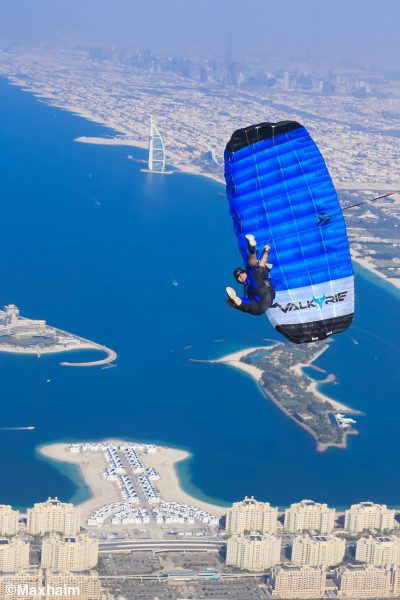
Unfortunately, Pablo’s turbo-charged start had a less-shiny side: He was an outlier. At 18 years old, he already had a good 3,000 jumps in his logbook. He was a good freefly athlete. He wanted to compete. But the talented teenager couldn’t, for the life of him, find another jumper in Spain whose age, skills and total dedication to the task were similar enough to make it work.
Then, one day in October of 2004, legendary canopy pilot Brian Vacher — a British jumper who became Pablo’s teammate on the PD Factory Tteam in 2009 — came to Pablo’s dropzone to teach a canopy course. The cocky teenager signed up.
“I did the course in a very arrogant way,” he adds, laughing, “because I was a teenager, and I thought I knew everything. I probably signed up for the course more to show off than to learn, really. But then it changed the way I saw canopy piloting.
I realized I didn’t know a $#!t! My technique was all wrong and dangerous. Low and unsafe.”
Learning from Brian Vacher
Over the course of the skills camp, Brian did a few swoops to demonstrate the discipline.
“I had never seen anything like that before,” Pablo says. “Remember, I was a local skydiver. I had never traveled the world to skydive. I was amazed by those landings he was doing. It became my goal to do the same. I wanted to fly like Brian; to swoop like Brian.”
Suddenly realizing he had a lot of ground to cover, the young Pablo hung out with Brian quite a while over the weeks he was in residence. They talked about Brian’s upcoming travel to the 2nd World Cup of Canopy Piloting in Lake Wales, Florida, six months ahead.
“We were having a long dinner,” Pablo recalls, “and I was asking him so many questions about the event; about the judging. I told him I wanted to do it. To go with him and compete. Brian was, like, Come on, Pablo, you don’t even fly a crossbrace yet. You fly a Sabre 107. The competition is in six months. You’ve never competed. It’s not a good idea. I told him no worries. I can easily and quickly find a crossbrace, start training and make it happen. In my mind I had taken my decision. In six months I was going to compete in that World Cup of Canopy Piloting, Intermediate Class.”
Pablo set to work immediately. He found a ragged-out JVX and trained hard for those six months.
“I didn’t have money, so I had to ask for a loan — something like €$5,000 euros — from the bank to make the trip,” he grins. “I’m amazed the bank gave that kind of money to a 19-year-old kid, but they did, and I had to pay it back over 2 or 3 years. I bought my ticket. I registered for the competition through the president of the Federation of Spain and I traveled to Florida. It was my first trip to the US.”
Against all odds: Pablos first competition was a World Cup… And he won!
When he arrived, he immediately set upon a tsk-tsking Brian to explain and re-explain to him all the rules: accuracy rules; scoring points; fouls. When the day came, he competed in the intermediate class. And he won. That was the official starting point of Pablo’s star-studded career.
It was there in Lake Wales, after all, that Pablo first met all his future PD Factory Team members.
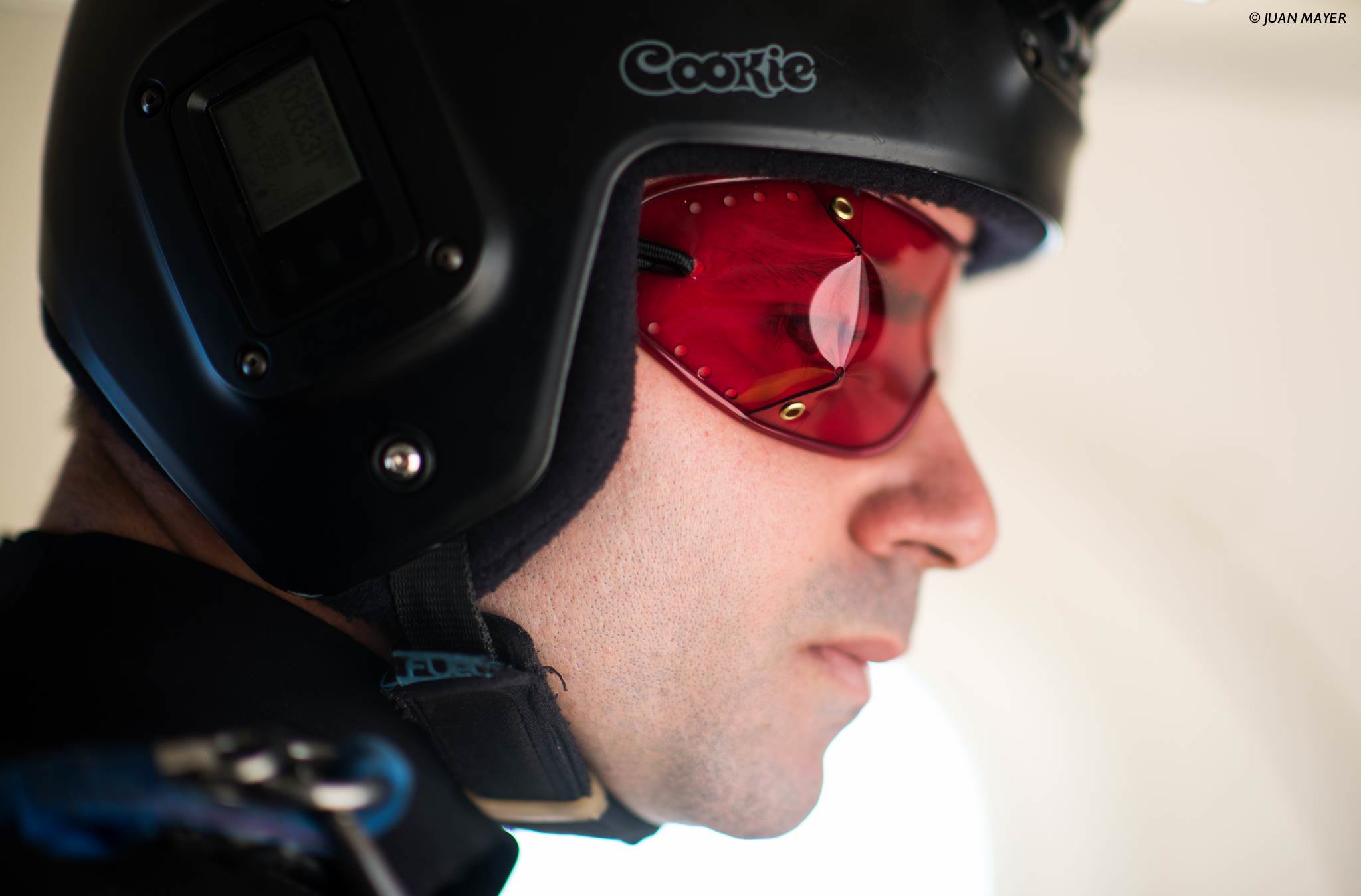
He met Jay Moledzki; Ian Bobo; Jonathan Tagle; John Charles Colclasure; Shannon Pilcher. As athletes and as people, they inspired him. So did the discipline iteself. Simply put, it solved all his problems.
“In canopy piloting, I didn’t need a teammate,” he says. “I was independent. I had my own budget, my own schedule. I could train whenever I wanted.”
Pablo immediately worked to leverage that first gold medal in order to advance as an athlete and to forge the sponsor relationships he still treasures. He got support from Sunpath straight away, then PD — both, brands he has represented for decades. Also, the dropzone he was working for at the time gave Pablo free training jumps. He racked up 2,000 jumps the first year he was sponsored.
“I did a few years like that, training, training, training,” Pablo remembers.
Soon, Pablo started traveling outside of Spain to teach and coach canopy control — mostly in Canada, because he speaks French. (The family lived in French-speaking Africa for 6 years of Pablo’s childhood.) He did coaching summer tours, traveling around different dropzones on the east coast of Canada, Quebec and Montreal.
“That was the first time I realized I could travel the world sharing the knowledge and teaching other people how to fly parachutes,” he says.
In 2009, Pablo joined the PD Factory Tteam. He’s been team captain for the past three.
Right now, Pablo’s logbook is getting close to 16,000 jumps, and he has spent the last full decade with a laser-focus on competition, fighting for that medal, representing the PD Factory Team in World Championships. Pablo has attended a total of 18 world meets, including world championships, world cups, World Games and World Air Games, over the course of which he has picked up 25 FAI medals, three European Championships and two world records. When he hasn’t been competing, he’s been teaching new competitors the ropes, running the Flight-1 Canopy school at Skydive Dubai for six years.
Now, he’s almost finished with that contract. And, as he’s always in search of a new challenge, Pablo is excited about the new role he’s taking on: heading up the Special Projects department for Skydive Dubai. He’ll be organizing, supervising and coaching the demo team of Skydive Dubai to organize demo jumps in Dubai — and also to organize TV commercials and commercial requests for local skydiving-related productions. Between the Special Projects department and the rejuvenated PD Factory Team, Pablo is getting ready to dig into a lot more public-facing work.
Make no mistake: this will be no desk job.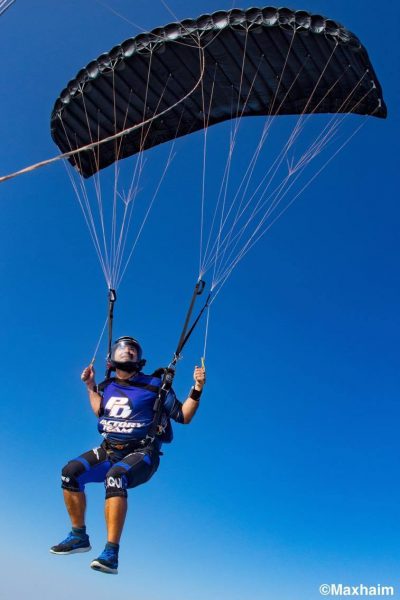
“Because of my experience and my skill,” he smiles, “I’m ready to plug and play.”
Pablo describes his current situation as something of a “retirement” from the classic competition arena: distance, accuracy and speed. While he remains “very much interested” in the freestyle side of the competition and intends to stay active in that aspect for the foreseeable future — competing at the first World Championships of Freestyle Canopy Piloting this year in Poland, for instance — he’s happy to see the three core events of canopy piloting in his rear-view mirror.
“Distance is quite rough for the body,” he explains. “You fly your parachute and try to go as far as you can, and the landing is quite hard and rough. I did my fair share of it already. It is like having a minor car crash every day of your life.”
While the focus of Pablo’s jumping leans heavy on the canopy side, he insists that he’s always down for a freefall — and his logbook proves it.
“I always try to stay very active in freefly and wingsuiting, as well as canopy piloting,” he says. “Those are the three things I really love to do.”
“The wingsuits on the market right now are so powerful and efficient,” he adds, “that it we’re the closest we’ve ever been to really flying. You can travel so much distance, build so much speed. You transfer freefly skills into wingsuit flying. It is very inspirational for me. I really hope to find some time to train in that direction and evolve my flying in those suits.”
It’s because of that that Pablo is the proud owner of a wingsuit CYPRES.
“I really like it because I know that it will fire at much slower speeds,” he insists. “Lots of times, you’ll be chilling and flying with your friends. And then you look at the GPS when you land, and whoa, we were moving at over 150 kilometers per hour horizontally.”
“It is definitely a wakeup call to realize how fast we travel across the ground,” he continues. “If for some reason those trajectories converge with each other, the closing speeds are really high and the impact can be quite brutal. It is good to have that Wingsuit CYPRES on my back, because I know if I end up being unconscious in freefall and for some reason I’m spinning and the wingsuit really slows down my descent, I know that unit will still fire. There’s a lot of peace of mind there.”
“Then for other jumps,” he adds, “When my main parachute opens up well, I’m happy to hear the beep that reminds me that my CYPRES has changed into a normal CYPRES or Speed CYPRES, whatever you adjust the settings for.”
CYPRES is proud to have Pablo Hernandez’s epic back, and to have a front-row seat for this exciting new chapter in his high-flying life at the forefront of the Dubai airsports scene.
“Here in Dubai is the land of opportunities for the kind of stuff that we do,” he enthuses. “I’m really motivated to do the kind of public-facing skydiving that I have been wanting to do for so long. I’m excited about the demos. Hopefully my job is going to be to bring Skydive Dubai back on the skydiving scene. I’m ready for that.”
Adventure, Tips, and Adrenaline
Subscribe to Our Newsletter
By signing up for our newsletter you declare to agree with our privacy policy.

